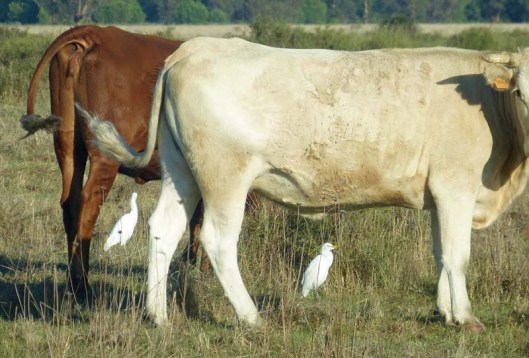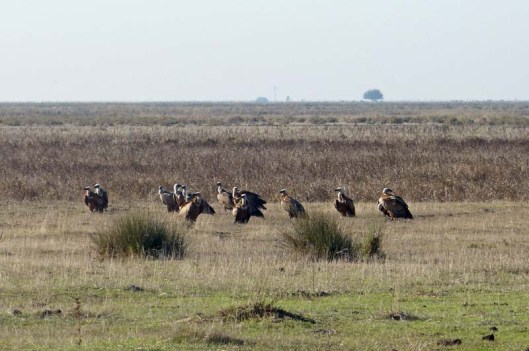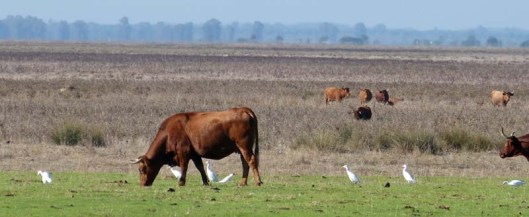Tags
Acebuche, Andalucia, Andalusia, azure-winged magpie, black-winged stilt, Blue rock thrush, Cattle egret, cinereous vulture, cormorant, Donana National Park, Eagle owl, Egyptian vulture, El Rocio, Eurasian black vulture, grey heron, greylag goose, griffon vulture, Iberian great grey shrike, Iberian magpie, Imperial eagle, Jandula, lapwing, littel egret, Naturetrek, Red-legged partridge, rock pipit, Sardinian warbler, Sierra Morena, spoonbill, starling, stonechat, White stork
Birds in Andalucia. Look, I’m not very good with bird identification, but I do know that eagles tend to soar. So when Simon said, incredibly excitedly, ‘There’s an imperial eagle on that post’, I quickly zoomed in on it and took this. I was not alone.  And not alone to realise, on examining the photo enlarged on the camera screen, that ‘that’ post’ was not that post! What Simon meant was this – perhaps half a mile away.
And not alone to realise, on examining the photo enlarged on the camera screen, that ‘that’ post’ was not that post! What Simon meant was this – perhaps half a mile away.  When you go on a Naturetrek trip, they provide you in advance with a checklist of all the creatures you may see, with a column for each day. There are always hundreds of species of birds on this list, and when we’re out I am in such awe as I hear naturalists/guides (and others) crying’, ‘That was the call of an X’, ‘There’s a Y.’ ‘Where, where?’ we all say, and they all do their darndest to help you see the creature. I’m probably about average in being able to pick something out visually, no better, and am certainly poor on birdsong. At the end of each day we gather together – nothing compulsory about it – and go through the list. Of those seen or heard by someone, I will have seen perhaps a third to a half, the bigger the bird the more likely I am to have seen it. I will have managed to take a photo of very few indeed. Here’s what I did get, with their identifications to the best of my recollection, (totally subject to correction, please). Firstly in the Coto Doñana.
When you go on a Naturetrek trip, they provide you in advance with a checklist of all the creatures you may see, with a column for each day. There are always hundreds of species of birds on this list, and when we’re out I am in such awe as I hear naturalists/guides (and others) crying’, ‘That was the call of an X’, ‘There’s a Y.’ ‘Where, where?’ we all say, and they all do their darndest to help you see the creature. I’m probably about average in being able to pick something out visually, no better, and am certainly poor on birdsong. At the end of each day we gather together – nothing compulsory about it – and go through the list. Of those seen or heard by someone, I will have seen perhaps a third to a half, the bigger the bird the more likely I am to have seen it. I will have managed to take a photo of very few indeed. Here’s what I did get, with their identifications to the best of my recollection, (totally subject to correction, please). Firstly in the Coto Doñana.

Original identification corrected to female or first-year male stonechat (Ack. BL)

Iberian great grey shrike

Stonechat

???

Cattle egrets living up to their name

And why not take a bunch of starlings? Especially when they are beautiful Spotless starlings, with wonderful glossy coats (though ordinary ones are pretty wonderful too!)

Griffon vultures

Griffon vultures

Best I could do to get a griffin vulture in flight

Easier to take this

We had driven a great loop and were now nearer to (but not very near) the Imperial eagle. Only about 4500 left in the world

And then Simon spotted another, incredibly far away, and I’ve magnified this many times, but the nest can be seen in silhouette, and the eagle in a direct line with it, on the right. Two Imperial eagles in view at the same time!

Almost as exciting to the leaders were a total of 6 Egyptian vultures coming in to two trees.


White storks and a heat haze

More cattle egrets doing their thing. To quote Wikipedia, ” It was originally native to parts of Southern Spain and Portugal, tropical and subtropical Africa and humid tropical and subtropical Asia. In the end of the 19th century it began expanding its range into southern Africa, first breeding in the Cape Province in 1908. Cattle egrets were first sighted in the Americas on the boundary of Guiana and Suriname in 1877, having apparently flown across the Atlantic Ocean. It was not until the 1930s that the species is thought to have become established in that area.”

We were taken to a tiny patch of the wetlands that was still wet. I would have expected that there would have been vast concentrations of waders there. There were not. In addition to these Little egrets (I think) and lapwing/black-winged stilts (which, or something else?) we saw spoonbill and other species further away.

Greylag geese, on the ‘lagoon’ at El Rocío
Then at our picnic spot at El Acebuche, I managed at last to see an Iberian (or azure-winged) magpie. I had heard them mentioned a few times, but this was the first time I had properly seen the beautiful creature, rather smaller than the common ones (and there were plenty of those around).  A few new birds (in terms of photographic opportunities) in the Sierra Morena.
A few new birds (in terms of photographic opportunities) in the Sierra Morena.  We saw a fairly rare Cinereous (a.k.a. Eurasian black) vulture over our picnic stop by the Jandula dam, but sadly this is not one, but a griffon vulture. (Identification BL)
We saw a fairly rare Cinereous (a.k.a. Eurasian black) vulture over our picnic stop by the Jandula dam, but sadly this is not one, but a griffon vulture. (Identification BL)

Rock pipits at the dam

There is a Blue rock thrush in this picture, also at the dam. Half way up the slope there is a bit sticking out. The bird is not that bit. The bird is the bit sitting on that bit!
Two red-legged partridges.  Some colleagues went out for a short early evening birdwatching trip on the second evening in the mountains, and came back saying they had seen an Eagle owl. We all went to the spot the next day, and this is where we were searching. (Well, the rock face was much bigger than this actually.)
Some colleagues went out for a short early evening birdwatching trip on the second evening in the mountains, and came back saying they had seen an Eagle owl. We all went to the spot the next day, and this is where we were searching. (Well, the rock face was much bigger than this actually.)  A third of the way down, and a quarter of the way in from the left there is this.
A third of the way down, and a quarter of the way in from the left there is this.  And within that there is this.
And within that there is this.  The Eagle owl is in one of these holes. See it? No I don’t either. Yeah, right, we’ll believe you Simon!
The Eagle owl is in one of these holes. See it? No I don’t either. Yeah, right, we’ll believe you Simon!
Several birds joined us at our last picnic spot, including this grey heron, which flew gracefully towards us after a while.  And then a troop (is that the word?) of Iberian magpies arrived at the same spot, and gradually made their way towards us, taking over the picnic tables as we left them. (Actually, the collective word for magpies is a murder, or a charm, or a congregation or a gulp. Take your pick.)
And then a troop (is that the word?) of Iberian magpies arrived at the same spot, and gradually made their way towards us, taking over the picnic tables as we left them. (Actually, the collective word for magpies is a murder, or a charm, or a congregation or a gulp. Take your pick.)

If it’s one for sorrow and two for joy, what do 14 magpies signify? (BL suggests for two secrets never to be told!)

 At the spot where we had seen the big fish, a kingfisher swooped along the river and under the bridge – no photo sadly – and these cormorants stood for a while and then took off.
At the spot where we had seen the big fish, a kingfisher swooped along the river and under the bridge – no photo sadly – and these cormorants stood for a while and then took off.  Next (and last) post: felines!
Next (and last) post: felines!

Well you may not know as many birds as some people but you surely know a lot more than I do. Thanks for sharing them with us.
LikeLiked by 1 person
No comment!
LikeLike
Well I think you have done a magnificent job in catching up with that little lot! And if you look at that rock face for long enough you can see owls and humans in abundance! The magpie is very pretty. Have you seen ournative jay? It’s incredibly colourful and looks very foreign indeed!
LikeLike
Yes, the jay is lovely to look at. When I see it, it is nearly always flying from tree to tree, across from one side of a country path to another, and away from me. Always catch a sight of its characteristic white bum!
LikeLike
A wonderful haul.
LikeLike
Interesting word!
LikeLiked by 1 person
I think of you in the form of an angler fishing for interesting things on your wildlife trips.
LikeLiked by 1 person
Pingback: Andalucia 11 | Musiewild's blog
Dear Musiewild,
If it helps, a few remarks about birds and pictures:
“Sardinian warbler”
I do not think the picture shows a Sardinian warbler. The absence of white throat and the orange-brown body are more likely to lead to a female stonechat or first civil year.
“And why not take a bunch of starlings?”
More precisely, spotless starlings. The common starlings are present in southern Spain only in winter.
“This Cinereous (a.k.a. Eurasian black) vulture was seen over our picnic stop by the Jandula dam.”
The photo shows a griffon vulture: the cinereous vulture does not have a head so clear and has a very regular wing width, the shape of an almost perfect long rectangle!
“And then a troop (is that the word?) of Iberian magpies arrived at the same spot, and gradually made their way towards us, taking over the picnic tables as we left them.”
In french language: groupe, troupe, compagnie… (P. Géroudet & M. Cuisin, Les passereaux d’Europe 1998, 2010 Delachaux & Niestlé, Paris)
In Extremadura – and probably Andalusia – I noticed that Azure-winged (Iberian) magpies are often fond of picnic areas! Omnivorous, they enjoy the leftover meals left by visitors …
“If it’s one for sorrow and two for joy, what do 14 magpies signify?”
Fourteen for 2 secrets never to be told? 😉
Many thanks for your detailed reports, always richly illustrated with photos!
LikeLiked by 1 person
Thank you Bernard. Your deep ornithological wisdom is always appreciated, along with your friendship.
LikeLike
Thank for all these Bernard. I have made some amendments to my post. Of note – I had forgotten that these were gorgeous Spotted starlings, and I have looked up the collective word for magpies, adding, “(Actually, the collective word for magpies is a murder, or a charm, or a congregation or a gulp. Take your pick.)” I had heard of the ‘murder’, but as applied to crows.
A pity about the Cinereous vulture, I was convinced I had taken a photo of the one we saw!
Many thanks for your help, as always, and hoping to hear that you have made it to Andalucia!
Venetia
https://musiewild.wordpress.com/ My occasional blog, mainly photos
LikeLike
“If it’s one for sorrow and two for joy, what do 14 magpies signify? (BL suggests for two secrets never to be told!)”
The problem is that the photo reveals 16! 🙂
LikeLiked by 1 person
No wonder you’re a better bird-spotter than I, Bernard. I still make it 14!
LikeLike
You did very well to photograph and name so many birds. I particularly liked the Iberian magpie.
LikeLiked by 1 person
Bel assortiment d’oiseaux, du vautour à la belle pie ibérique. Je me serais aussi laissé avoir par le 1er “aigle” ! Heureusement que tu as pu voir le vrai ensuite. Chapeau pour la photo avec le nid et la silhouette (même si c’est agrandi). Je vais enfin arriver aux félins !!
LikeLike
“Everything comes to he [or she] who waits”
LikeLike
Or even “Patience is a virtue.”
LikeLike